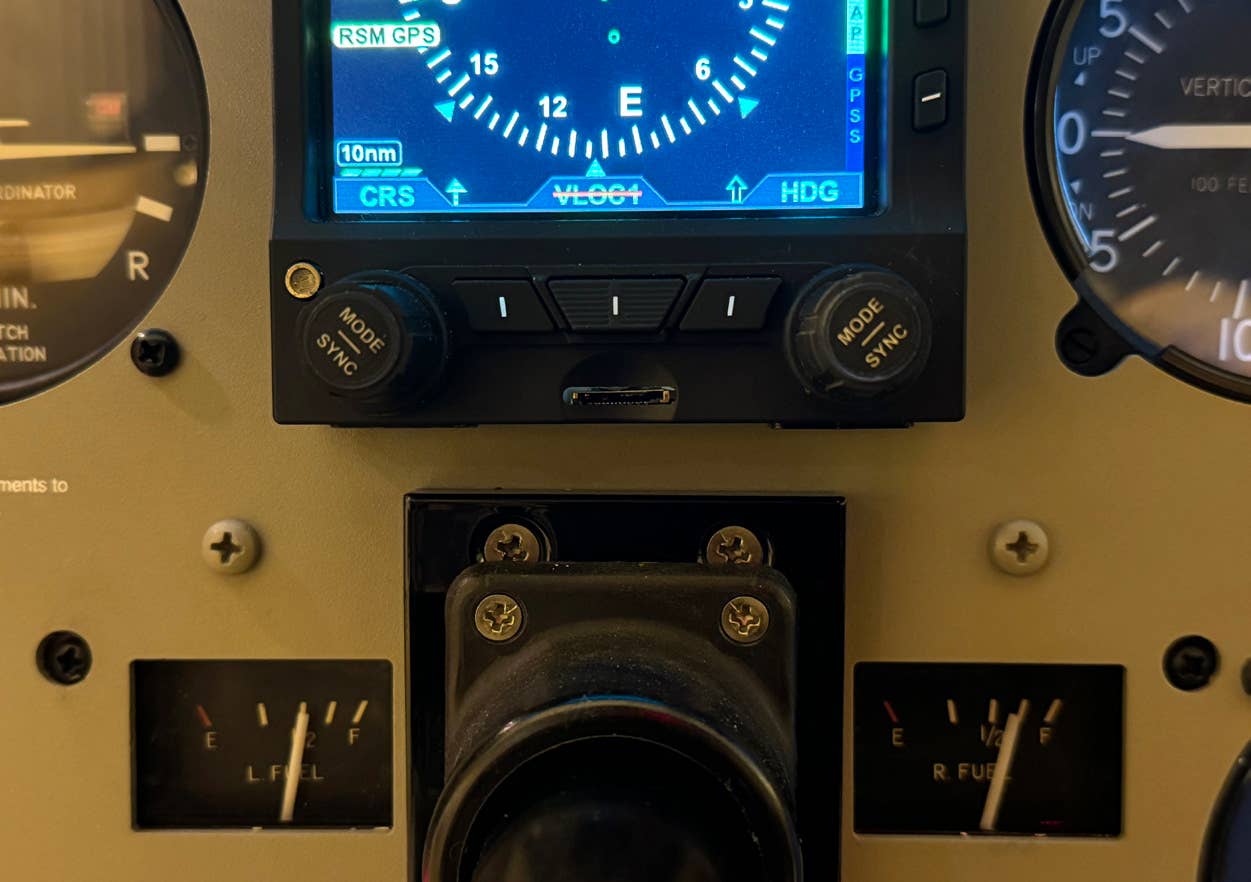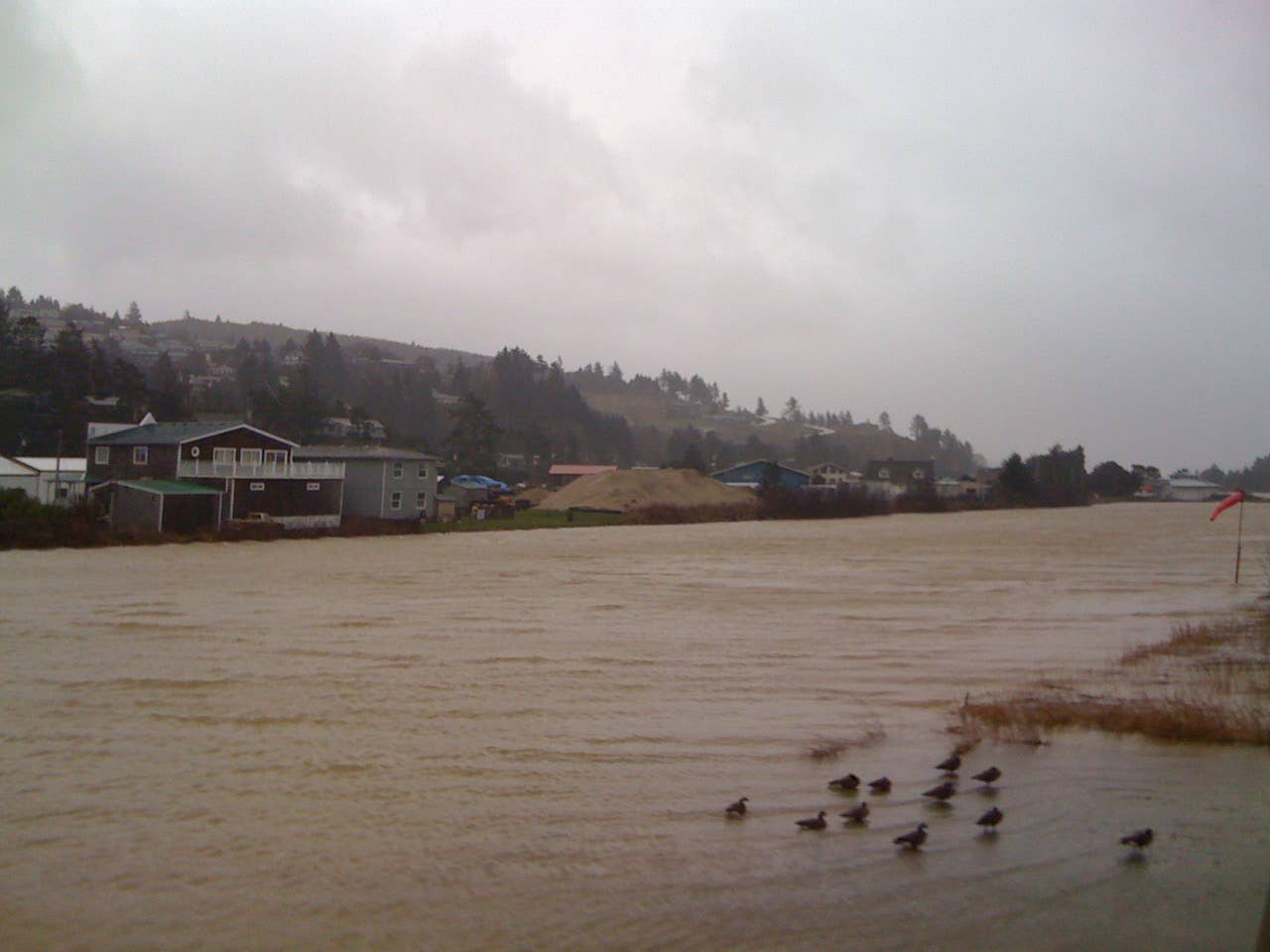
It seems as though our most vivid memories come from some of our worst experiences in life. While many pilots don't remember their first exposure to structural icing, they probably will never forget their worst. For many, it remains etched in their brain forever. But, we can avoid making painful lasting memories if we do some careful preflight planning and use some street smarts to negotiate the system to our advantage during this icing season.
The icing environment in and around the Great Lakes region is not a place where you want to cut your teeth with respect to icing. Any instrument pilot that has experience flying in this region during the early winter is probably nodding his or her head right about now. Three years ago I helped one of my former instrument students avoid making any bad memories for a cross-country flight from Springfield, Illinois (KSPI) to Williamsport, Pennsylvania (KIPT).
It was early November, and this would be Rick's first exposure of the season. This time of the year, convective sigmets seem to morph into icing airmets as we become prisoners within our own airspace. After five months of ice-free flying, I could tell he was apprehensive about this flight. I was more than happy to help him sort it out.
Rick flies a normally aspirated Cirrus SR22 mainly for pleasure. With the promise of a decent tailwind, he would be able to easily make a nonstop flight with plenty of fuel in reserve should he need to divert. Fuel in the tanks will give you more options if things don't go as planned. His biggest challenge was trying to decipher the icing environment through the Ohio Valley on that early November day.
His plan was to depart Springfield in the late morning. This would put him in Williamsport by midafternoon. Springfield is located in central Illinois a bit upwind of the Great Lakes ice-breeding ground. Williamsport is located in north central Pennsylvania, a definite downwind target of the Lake Erie and Lake Ontario ice blast zone.
Shift in Thinking
The sun was just starting to rise when Rick joined my online session. Since his SR22 does not have a certified ice protection system (IPS), I thought it would be useful to do a bit of review to shift his thinking from dodging thunderstorms to ice avoidance.
We started with the basics. If you are flying in visible moisture and the air temperature is at or below 0 degrees C, there's a good chance you'll encounter some kind of structural icing down to a temperature as cold as -25 degrees C. Visible moisture includes cloud drops, rain or drizzle. Below -25 degrees C, supercooled liquid water becomes increasingly scarce outside of any deep, moist convection.
I also wanted to point out to Rick that many nonconvective weather systems are layered. However, if a climb or descent fails to take him out of visible moisture or out of the freezing temperature band, the chance of continued structural icing is still very likely, and a change of altitude could place him in a region where the liquid water content is higher.
The Big Picture
So it was time to look at the weather for his proposed flight. Even though Rick was eager to jump right to the details, I convinced him to first take a look at the big picture, or what meteorologists refer to as the synoptic-scale weather.
Here's what we saw. The latest surface analysis chart valid at 1200 UTC showed a cold front located near the Eastern Seaboard. By looping the surface analysis over the last 24 hours, it was apparent that this front had marched to the east, pushing through the upper and lower Great Lakes and Ohio Valley regions during the previous day and overnight hours.
A deep, occluded low pressure was located over Georgian Bay, well to the north of Detroit. A fairly strong pressure gradient extended hundreds of miles outward from the center of this low, creating brisk surface winds that were generally from the west. Rick was quite relieved to learn that his entire proposed route was located behind the cold front with favorable tailwinds.
What Does It All Mean?
The area behind a strong, fall-season cold front is not where you generally find deep, moist convection or thunderstorms. However, in November the warm water of the Great Lakes can be quite the ice machine when it is coupled with a cold Canadian air mass as it picks up surface moisture and transports it south and east. Moisture-rich, post-cold-frontal stratus and stratocumulus clouds are the usual result. With surface temperatures in the mid- to upper 30s and a cold air mass moving in aloft, that means these clouds are guaranteed to be dominated by supercooled liquid water.
The trends in the analyses and forecasts all implied the icing would remain around for the remainder of the day. In fact, the clouds and icing potential were forecast to continue to push south and east through the afternoon.
Of course, this prompted the Aviation Weather Center (AWC) to issue an icing airmet at 1445 UTC from 2,000 feet through 13,000 feet valid through 2100 UTC. The airmet encompassed most of the northern two-thirds of Ohio and also included the western half of Pennsylvania, anticipating the south and eastward push of these clouds.
The airmet did include a good portion of the proposed route. For the moment, it did not include the airspace for Rick's departure and destination airports. Usually, though, these types of clouds are not much more than a few thousand feet thick but can cover a lot of territory, cutting you off from your destination. For the time being, Springfield was clear and Williamsport was reporting a broken sky at 4,100 feet. The Williamsport terminal forecast kept the broken clouds most of the day, but did imply that the ceiling would improve to 10,000 feet throughout the remainder of the morning and afternoon. Certainly this was something that Rick would have to monitor.
Route and Altitude Planning
Assuming Rick wanted to make this flight, he had four choices: go over, go under, go through or go around. Going around was perhaps the most conservative choice. However, most of West Virginia was expected to fill in with icing, so Rick would have to fly well to the south into Kentucky and Virginia before heading north into Pennsylvania to avoid the icing. That would add time and miles and may force a fuel stop.
Without a certified IPS, any altitude below 10,000 feet on a direct route would place him in probable icing conditions, given rather warm cloud top temperatures and marginal VFR ceilings en route. At some point in time, he'd likely be forced to climb to at least 11,000 feet or higher to make the flight over the weather.
With the ability to climb in clear air out of Springfield, flying on top of the deck wasn't out of the question as long as there was supplemental oxygen on board. While not a certified IPS, his SR22 was equipped with a non-certified TKS "weeping wing" IPS in the event he needed to land short of his destination due to an in-flight emergency. The biggest question would be the cloud cover at Williamsport upon arrival. The Forecast Icing Potential (FIP) showed a good chance of structural icing creeping in that area by the late afternoon despite the optimistic terminal forecast. With only scattered clouds expected in southeast Pennsylvania, this became a solid out if needed.
Rick's Final Answer
Unfortunately, it was still early in the morning and there were only a few pertinent pireps in the system. These reports confirmed that the icing tops were sloped with the highest tops to the north of his optimal direct route and lower to the south. A more direct route would likely force him to eventually climb to 13,000 feet or higher. Rick was hoping to make the flight at 9,000 feet since there wasn't any supplemental oxygen on board his Cirrus.
After we discussed all the options, Rick decided to file a flight plan that was a compromise between a direct route and one that would force a fuel stop. The icing environment was not as deep in southern Ohio, so he shifted his route to the south by 100 miles or so. It was clear that this would eat a little into his fuel reserves, but it would allow him to complete the flight in one leg and minimize his exposure to structural icing. Rick headed to the airport, got his IFR clearance and headed east.
Don't Stay in the Dark
During the summer, ATC can lend a hand helping you to work around thunderstorms. In the winter, don't expect it to be as proactive keeping you out of the ice. There are a few things it can do to help, but you need to make it happen.
As Rick approached southern Ohio, the first clouds came in view. For now, the tops were comfortably below him. As he looked out over the endless sea of clouds ahead, he asked the next controller if there were any aircraft along his route that were also on top at 9,000. A few minutes later, ATC responded that a Baron 50 miles east was on top at 10,000 feet headed in the opposite direction — the pilot of the Baron estimated the tops were around 9,000 feet. That was priceless information that you won't necessarily get unless you ask for it. Pilot reports will certainly allow you to act quickly now instead of reacting when it is too late. This kind of solicitation works well in just about all phases of flight.
Also remember to listen up. If pilots on your frequency are all asking ATC for higher altitudes due to icing, that might be a clue that the icing layer may be creeping up into your altitude. Don't count on the controller to be thinking ahead for you. He likely knows less than you do about the weather ahead.
Perhaps the best information available in the cockpit is satellite-delivered weather. A few years ago, XM WX Satellite Weather added pireps to its broadcast — your portable or panel-mounted system may display them in a text and/or graphic form, allowing you to monitor the route continuously while airborne. With the transitory nature of icing, any pilot report more than an hour old should be used with caution.
When you run out of other options, you can always use the traditional method and ask ATC to leave the frequency to call En route Flight Advisory Service Flight Watch on 122.0 MHz to get the most recent pireps. Flight Watch is organized by the en route center (ARTCC), so don't forget to let it know where you are located relative to a navaid or airport when you call.
Ask for a Block Altitude
At 9,000 feet, Rick had some wiggle room to climb, if necessary. Sure enough, as he approached the West Virginia border, those clouds did begin to creep up to meet him. He didn't want to be in the tops where the icing in stratocumulus clouds can be the worst. These clouds have a lumpy or quilted-like appearance on top, and you may need to climb just a few hundred feet to stay in clear air. He asked ATC for a block altitude to 10,000 feet, which was immediately granted. This allowed him to climb as necessary to stay above the tops without the need to climb and stay at 11,000 feet. Of course, a block altitude may not be a viable solution, especially in congested airspace.
Switch Focus
At this point, he was more than halfway to his destination, and it was time to get serious about that inevitable descent. Once again satellite weather in the cockpit helped Rick to stay abreast of the developing weather. Even though there is a lag in the information many of the weather products report, he was able to keep a close eye on any special observations (SPECIs) and forecasts showing growth of the cloud field at his destination. The ceiling at Williamsport went from a few clouds at 4,000 feet to broken at 6,000 feet, which definitely caught his attention. Most importantly, he wanted to be sure his alternates in southeast Pennsylvania remained open.
At about 1730 UTC, the new terminal forecasts were broadcast for his destination. The news wasn't great. Williamsport was forecast to go broken at 4,000 feet through the afternoon and well into the early evening with good visibility below the deck. This was certainly worse than the earlier forecast of a broken deck at 10,000 feet. The good news was that his alternate airport, Harrisburg (KMDT), located in south central Pennsylvania, was forecast to remain scattered at 5,000 feet.
The infrared satellite image from the XM Weather broadcast was showing no clouds above 10,000 feet along the remainder of his route. He was able to zoom in on this image and see that there were just scattered clouds above 5,000 feet in southeastern Pennsylvania, keeping some options wide open.
At this point there were only two pilot reports in the system based on a recent discussion with Flight Watch. There was a report of light rime icing at 7,000 feet and moderate rime at 10,000 feet in southwestern Pennsylvania but no icing reports of any kind on a descent into Williamsport. The lack of pireps, of course, doesn't necessarily mean there's no icing.
As he approached western Maryland, Rick could see the ground occasionally through the clouds below. This was definitely a good sign of better things to come. This triggered him to think through a couple of options before turning northeast toward his original destination. Without any assurance of a clean descent into Williamsport, he decided it was best to change his destination to Harrisburg, which was basically straight ahead.
As he got closer to Harrisburg, the approach controller issued him a descent to 5,000 feet. He was still above a broken deck of clouds at the time but could see in the distance that the clouds appeared more scattered. So Rick asked the approach controller and received a descent at pilot's discretion to be able to descend in clear air and avoid any extended time in the clouds. Once below the cloud deck, Rick canceled IFR and asked for flight following to Williamsport.
Rick told me that the visibility below the clouds was excellent. He was very familiar with the terrain in this part of the country, so he didn't mind making the rest of the trip VFR. There were just a few light snow showers showing up on his XM Weather display, but the ceilings remained broken at 6,000 feet, allowing him to land uneventfully on Runway 9 with a 12-knot crosswind.
While it can surprise some pilots, the area behind a strong cold front during the early winter can produce some nasty stratus or stratocumulus clouds that are ordinarily dominated by supercooled liquid water, especially those in and around the Great Lakes states. Before departing, always get a good weather briefing so you can identify the best route and altitude to minimize your exposure to structural icing. Most importantly, identify alternate areas that are likely to allow a VFR descent in relatively clear air in the event a solid cloud deck cuts you off from your original destination.
Once in the air, continue to monitor the weather to allow for prompt changes to the current plan. This includes requesting recent pireps and other pertinent weather from controllers, Flight Watch and even through satellite weather receivers. Comparing all of this to the weather picture that is unfolding outside of your windscreen will go a long way to making a safe flight even if you need to divert to an alternate destination or change your flight from IFR to VFR. Air traffic controllers and Flight Watch are available to help, so don't be shy — use their services.
One thing is clear: Structural icing remains a critical concern for pilots of all light airplanes, but especially to pilots flying airplanes that lack known-icing-approved equipment. The good thing is that today we have more tools at our disposal than ever to find out where the ice is and to avoid it. And in most cases, an icing forecast doesn't mean we can't make a particular trip. But it does mean we need to make the most of the available information to stay out of the ice, giving ourselves an out at every juncture of the trip.
Scott Dennstaedt is an instrument flight instructor and former National Weather Service research meteorologist. Scott has more than 3,000 hours instructing in technically advanced aircraft and specializes in teaching aviation weather to pilots at all experience levels. You can reach Scott at scott@avwxworkshops.com or visit his website at avwxworkshops.com.

Sign-up for newsletters & special offers!
Get the latest FLYING stories & special offers delivered directly to your inbox






